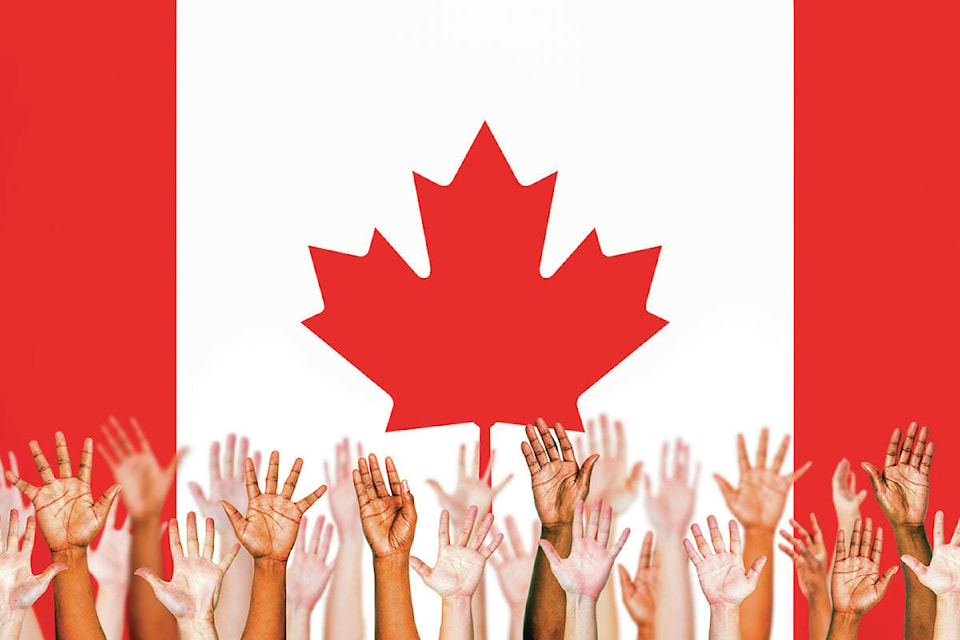With the federal Liberals having backed away from Prime Minister Justin Trudeau’s election promise to do away with first past the post elections and the BC government promising an electoral reform referendum this year, the issue is clearly controversial.
Part of that controversy, West Creston’s Vladimir Certik says, is that proposals have been unnecessarily complicated.
“The last referendum the province held was defeated because people couldn’t understand how it was supposed to work,” he said. “And they won’t support any change if they are not clear about what it will mean when they vote.”
To that end, Certik came up with a plan and then got Wynndel’s Len Parkin to help fine tune over it. Together, they have a proposal they think would be a dramatic improvement over the first past the post system used in most Canadian elections.
The following is their proposal:
The following ideas are meant to offer a simple but viable alternative to the ‘first past the post’ system of elections that are the norm in Canada both federally and provincially.
The critical elements of this approach address two main issues:
A. The outcomes will be a very close representation of the percentages of the popular vote for both parties and independents.
B. The outcomes will hopefully force politicians to focus more on what is best for the province or country and focus on how to work together using the combined ideas of more than one political philosophy.
The following proposal is focused on the Province of BC.
1.Use 43 electoral districts as in federal elections for BC
2.Those 43 winners get the MLA seats automatically
3.If any party gets close to their total percentage votes received (or exceeded already), they get nothing more. This is to reduce the chance of one party getting such a high percentage of the seats that they can force their own agendas without the input of other points of view. The goal is working together and not behaving like selfish little children and bullies. It is time for our politicians to model to our population the ideas of teamwork and caring for everyone and not just the majority of that particular election.
4. Fill the remaining seats to satisfy a proportional representation formula by allocating seats in the following manner: Note, the order of these choices is important to keep in mind as you read this. The additional seats are allocated starting with a) then b) then c) etc.
a) Any party that gets over 1% of the overall votes will get a corresponding number of MLA seats from #2 positions in the 43 ridings. For example: If a party got 10 % of the total provincial vote, then they will choose from those in their party who got 2nd place in their riding until they reach 10% of the 83 provincial seats. Therefore, those in their party with the highest percentage vote in their riding will be first chosen and then the person with the second highest percentage in their riding would be chosen next and so on until they have reached their 10% of the total of 83 ridings.
b) if any independent candidate(s) get second place in any riding and there is a need to fill MLS’s to 83, he/she gets elected
c) if any major party needs extra MLA’s because they received more overall percentage of votes than they got from those 43 automatically allocated, they get extra seats not exceeding the overall percentage of votes their party received
d) if rounding up the percentage requires a small number of extra MLA’s
(1-3), let the Chief Electoral Officer decide it as he/she is the only one who cannot vote and is probably the most independent referee.
The above-mentioned proposal combines aspects of a voting system and ridings people are familiar with and can rely on. Also, it guarantees close to proportional representation and the results are readily available hours after the elections, it provides public confidence in the fairness of this system.
Regarding low interest and non-participation of voters:
1.This system gives voters a real choice instead of frequent voting for the lesser of two evils or not voting at all. Voters have a good chance to get a small party or an independent candidate elected.
2.To motivate all, including those who usually do not bother, why don’t we encourage voters with a lottery style reward, let say, $100,000 for a winner and $50,000 for a second and a third place? We use a ‘bribery system’ anyway, calling it a political contribution or a campaign donation. Some countries use a compulsory voting system that forces people to vote but this proposal is closer to a democratic process than forcing people to vote.
P.S.: Over the years, an alarming number of Canadians or BC residents refused to vote because they felt or were locked out and thus not heard. Maybe a fair system will bring them out and make them a deciding factor in most of the provincial, federal or even municipal election.
What do you think? Comment at www.crestonvalleyadvance.ca or write us a letter at editor@crestonvalleyadvance.ca.
